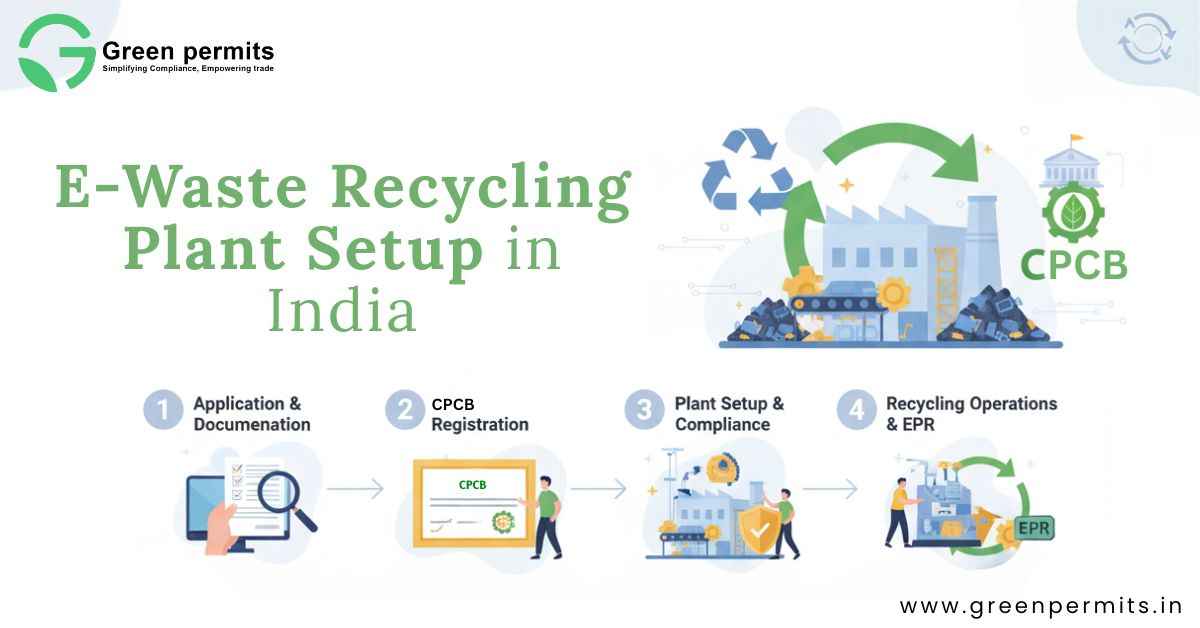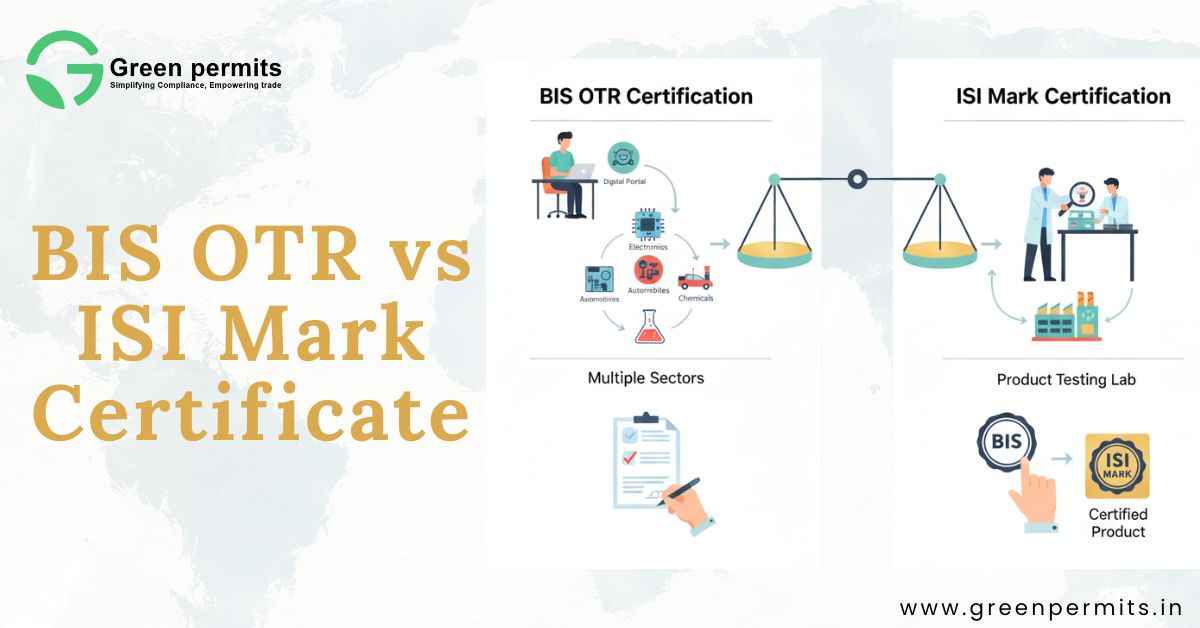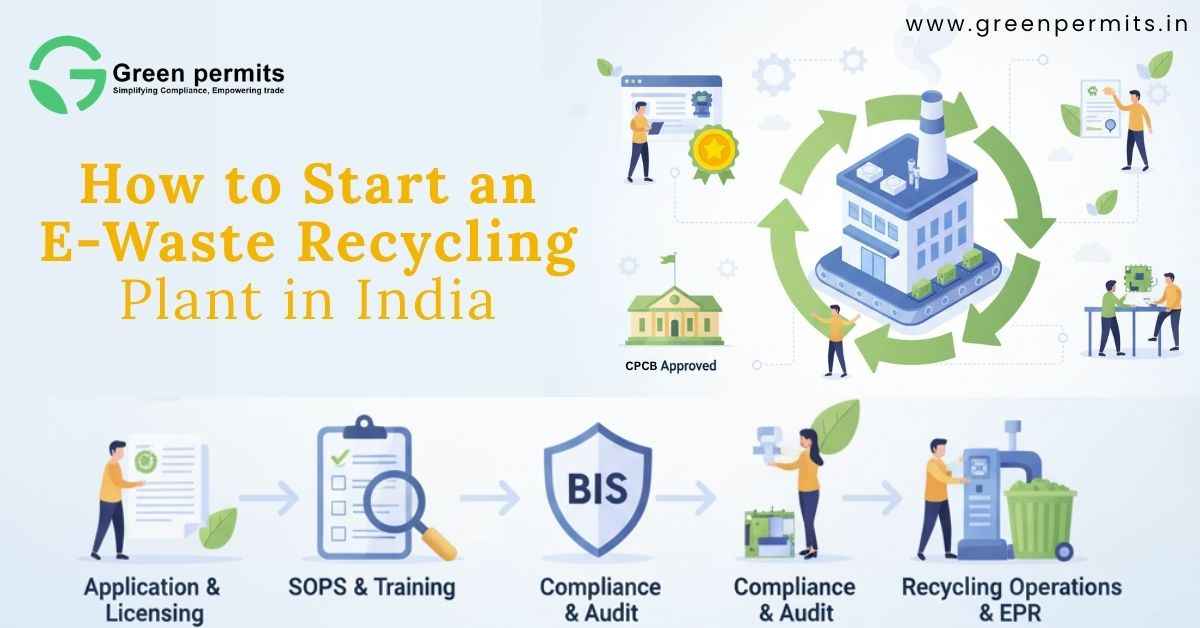Introduction: Why E-Waste Recycling is India’s Next Big Industrial Opportunity
India is the third-largest generator of e-waste after the US and China, producing over 1.6 million tonnes every year—and that number is growing by 15–20 percent annually.
Every mobile phone, laptop, and server discarded by consumers holds recoverable metals such as copper, gold, aluminium, and rare earths. Yet, most of this waste still ends up in informal scrapyards with unsafe handling and zero environmental accountability.
To fix this, the Government of India introduced the E-Waste (Management) Rules 2022, creating a transparent digital system where every producer, recycler, refurbisher, and importer must register on the CPCB’s EPR Portal.
For entrepreneurs and manufacturers, this isn’t just compliance—it’s a chance to tap into a sunrise sector aligned with India’s “Circular Economy Mission” and “Atmanirbhar Bharat” goals.
The Legal Framework: From Policy to Practice
The 2022 Rules (effective 1 April 2023) replaced the 2016 framework and unified the concept of Extended Producer Responsibility (EPR)—making producers and brand owners responsible for the collection and recycling of the products they introduce to the market.
The four regulated entities are:
- Manufacturers – companies assembling or fabricating electrical & electronic equipment (EEE).
- Producers – those selling EEE under their own brand or importing finished products.
- Refurbishers – entities repairing or restoring used EEE for resale.
- Recyclers – units processing waste EEE to recover metals and materials.
Each must obtain a unique registration on the CPCB EPR Portal: https://eprewastecpcb.in.
Operating without registration or trading with unregistered entities is a punishable offence under the Environment (Protection) Act, 1986.
Step-by-Step: How to Register a Recycling Plant with CPCB
1. Project Planning & Site Selection
Choose an industrial-zoned site with clear access to utilities, safe distance from residential areas, and approval from the State Pollution Control Board (SPCB).
Prepare a layout plan showing dismantling areas, shredding units, segregation rooms, and storage zones for hazardous fractions like PCBs and batteries.
2. Obtain State-Level Consents
| Approval | Issued By | Key Purpose |
|---|---|---|
| CTE / CTO (Consent to Establish / Operate) | SPCB / PCC | Air & water pollution clearance |
| Authorization under Hazardous & Other Wastes Rules 2016 | SPCB / PCC | Permit to handle e-waste streams |
| Factory License / MSME Udyam | Local authority | Legitimizes manufacturing unit |
| Fire & Occupational Safety NOC | Fire Dept / DISH | Worker & plant safety verification |
| GST & PAN | GSTN / CBDT | Tax and business identity |
3. Apply on the CPCB EPR Portal
- Create a user account on the portal.
- Enter company & facility details, coordinates, installed capacity (in MT/year), list of equipment, and products recovered.
- Upload mandatory documents—CTE/CTO, authorization, PAN, GST, geo-tagged videos & photos.
- Submit a self-declaration confirming the authenticity of data and the adoption of occupational-health and fire-safety measures.
Processing Time:
- Application review within 30 working days.
- Digital checklist of deficiencies (if any) shared through the portal.
- Registration certificate issued once the information is complete.
- CPCB / SPCB may conduct a physical or virtual inspection within three months.
- Registration validity: five years.
CPCB Fee Structure (Official 2022 Notification)
| Category | Activity | Registration Fee (₹) | Renewal Fee | Annual Maintenance (₹) |
|---|---|---|---|---|
| Recycler | New Registration (5 years validity) | 15 000 | 7 500 + 0.625 ₹ / MT on EPR transactions | 5 000 |
| Refurbisher | New Registration (5 years validity) | 15 000 | 7 500 + 0.625 ₹ / MT | 5 000 |
| Manufacturer | One-time Registration | 15 000 | — | 5 000 |
Tip: Payments must be made only through the official portal’s payment gateway—offline deposits or drafts aren’t accepted.
Building the Plant: Technical & Environmental Benchmarks
A professionally designed e-waste recycling facility must include:
- Material Flow Layout: Logical movement from manual dismantling → mechanical separation → metal recovery → safe disposal.
- Segregated Zones: Dedicated enclosures for CRTs, PCBs, cables, plastics, and batteries.
- Pollution Control Systems: Dust collectors, acid scrubbers, and effluent treatment plants.
- Fire & Safety Infrastructure: Hydrants, extinguishers, spill kits, and worker training records.
- Material Balance Sheet: Input/output analysis of recoverable metals to prove recycling efficiency.
- Documentation Room: Records of incoming waste, recycler ledger, and quarterly EPR reports.
Regular inspections ensure that these systems operate as declared in your application.
The Business Case: Turning Compliance into Profit
Many new entrepreneurs assume recycling is only a compliance cost. In reality, a well-run e-waste plant generates three major revenue streams:
- Metal Recovery & Sale: Copper, aluminium, iron, and even traces of gold or palladium recovered through hydrometallurgical processes.
- Component Resale: Working components (RAM, chips, power supplies) refurbished and resold to manufacturers.
- EPR Certificate Trading: Recyclers earn tradable credits for every kilogram of verified metal recovered, which producers buy to meet their EPR targets.
With India’s electronics market projected to reach $300 billion by 2026, CPCB data shows the recycling potential could cross ₹15 000 crore annually.
How EPR Certificates Work
Under CPCB’s 2024 framework:
- EPR Certificates are generated for key metals – Gold, Copper, Aluminium, and Iron.
- The certificate quantity = verified metal weight × conversion factor.
- Producers / importers purchase these certificates on the CPCB marketplace to fulfil their annual EPR targets.
- Recyclers upload quarterly returns with data on waste processed, metals recovered, and sales invoices.
Example:
If a recycler processes 1 000 kg of printed-circuit boards and recovers 200 kg of copper and 10 kg of aluminium, the system auto-generates certificates equivalent to that recovery, which can be sold to producers online.
Documentation Checklist for a New Recycler
| Document | Description |
|---|---|
| CTE & CTO Certificates | Pollution control clearances from SPCB / PCC |
| Hazardous Waste Authorization | Permit for handling e-waste & residues |
| PAN & GST | Identity proof & tax registration |
| Geo-tagged Plant Photos / Video | Evidence of operational machinery |
| Company Incorporation / CIN | Proof of legal entity |
| Self-Declaration Letter | Assurance of authentic data & safety compliance |
| CA-Certified Sales Certificate | Confirms quantity of EEE handled |
| Material Balance Sheet | Input vs output of metals recovered |
Keep both hard copies and digital backups ready for inspection.
Common Mistakes That Delay Approval
- Using inconsistent addresses across CTE/CTO, GST, and application forms.
- Uploading non-geotagged or inactive videos of the facility.
- Missing fire safety or health declarations.
- Expired consents or licenses.
- Not replying to CPCB queries within seven days.
Even a minor documentation error can stretch approval timelines from 30 days to six months.
Penalties & Enforcement
CPCB has authority to suspend or revoke registrations if:
- The recycler submits false or incomplete information.
- The unit operates beyond approved capacity.
- The plant fails verification checks.
- Occupational health and fire safety measures are absent.
Under the Environment (Protection) Act, violators may face:
- Closure orders or production stoppage
- Seizure of goods and equipment
- Environmental compensation penalties
- Import/export restrictions by DGFT
- Civil or criminal action for repeated offences
Reporting & Annual Returns
Registered recyclers must file quarterly and annual returns through the EPR portal.
The return includes details of e-waste collected, processed, metals recovered, certificates generated, and awareness activities conducted.
Quarterly returns are mandatory in sequence, while annual returns must be filed by 30 June of the following financial year.
Consistent filing builds a transparent track record, which helps during renewals and audits.
Case Example: How a Mid-Sized Recycler Became an EPR Success Story
A Bengaluru-based entrepreneur set up a 3 000 MT/year e-waste plant in 2023 with an investment of ₹1.8 crore.
By combining mechanical dismantling with copper recovery units, the company:
- Processed over 1 000 tonnes of e-waste in the first year
- Generated EPR certificates worth ₹60 lakh
- Achieved breakeven within 18 months
Their biggest advantage? Early registration on the CPCB portal and regular reporting, which attracted OEM contracts from large electronics brands.
Why Early Compliance Pays Off
- Faster Market Access: Many corporate clients now work only with CPCB-registered recyclers.
- Investor Readiness: Banks & venture funds prefer projects with clear regulatory track records.
- Avoid Customs Delays: Registered recyclers can import equipment or export recovered metals with fewer queries.
- Environmental Brand Value: Certified recyclers often feature in ESG or CSR portfolios of OEMs.
Why Partner with Green Permits
Setting up an e-waste recycling plant means navigating multiple departments—CPCB, SPCB, local bodies, and testing labs.
Green Permits Consulting LLC provides one-window advisory for everything from feasibility to EPR credit generation:
- Site feasibility & layout design
- DPR and financial viability reports
- CTE / CTO / Authorization filing
- CPCB portal registration & documentation
- Compliance audit and annual returns
- EPR certificate tracking & sale advisory
Conclusion: Building a Responsible & Profitable Future
E-waste recycling is no longer an informal scrap trade—it’s a regulated industry linking environmental responsibility with economic return.
By obtaining CPCB registration, designing a safe facility, and maintaining transparent records, you not only stay compliant but also gain a competitive edge in India’s growing green manufacturing ecosystem.
Green Permits helps you turn regulation into revenue and accelerate your journey toward a sustainable, profitable future.
📞 +91 78350 06182 | 📧 wecare@greenpermits.in
Book a Consultation with Green Permits
Book a Technical Call with Expert
FAQs
Begin by getting your SPCB consents (CTE & CTO) and registering on the CPCB EPR portal — that’s your legal foundation.
If your documents are ready and accurate, CPCB approval usually takes around 30 working days.
Expect about ₹15,000 for registration, plus a small renewal and annual maintenance fee later on.
They’re digital credits for recycled metals—you can sell them to producers to help them meet EPR targets and boost your revenue.
No — running unregistered is illegal and can lead to penalties, suspension, or plant closure.









